Consider yourself fortunate if you’ve spotted a bluebird in Florida since it has only a few bluebird species.
Due to its mild weather, Florida is a favorite destination for birds in winter. Florida is home to a variety of rare species that you would not see elsewhere in the nation. Continue reading the blog post to find out more about the habitats, diets, behaviors, and identification tips of the most common blue birds in Florida.
List of bluebirds in Florida
Only one of these bird species, the Indigo Bunting, is completely blue. The rest are only slightly blue.
Let’s now dig into the specifics and examine each of these birds in more depth:
1. Indigo Bunting
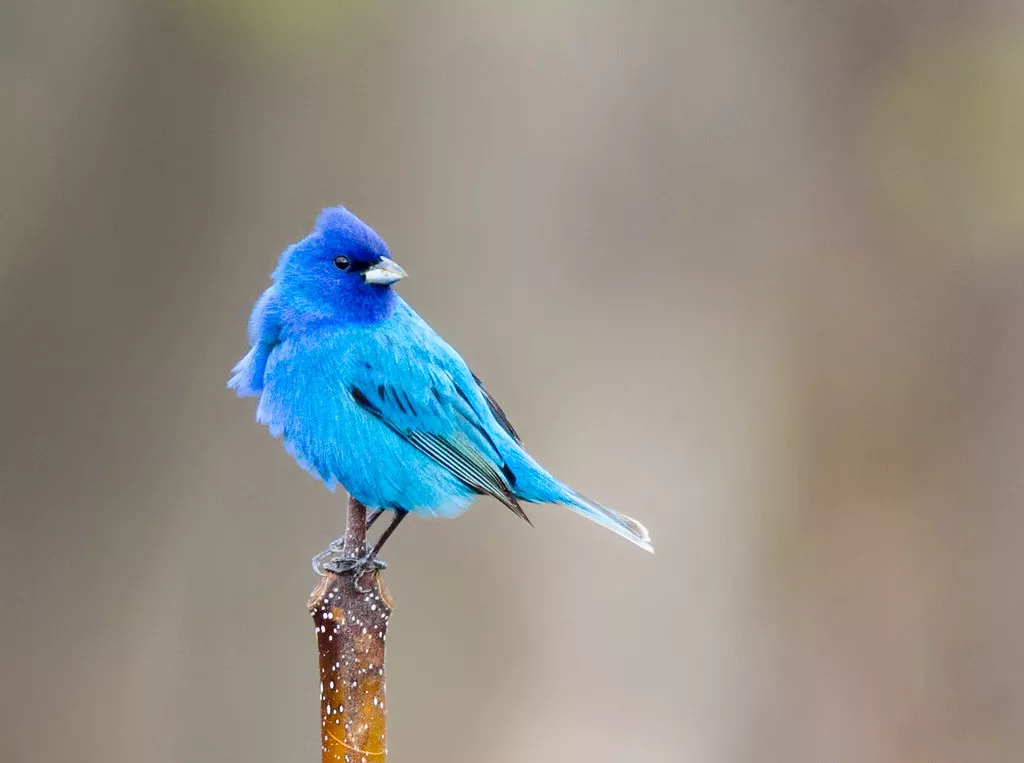
Image Source
- Scientific name: Passerina cyanea
- Lifespan: 10 years
- Size: 5 inches
- Native to: Southern Canada to northern Florida during the breeding season, and from southern Florida to northern South America during the winter.
The Indigo Bunting is a tiny bird with bright colors. The male is nearly totally azure blue in the summer, with the exception of somewhat darker brownish wingtips and tail feathers.
Females and young birds have light brown upper parts and creamy white under parts.
The Indigo Bunting is abundant in Florida along woodland borders, gardens, and parks, and will easily visit bird feeders that supply seeds.
In Florida, the Indigo Bunting is the only bird that is totally blue in color.
It is more frequent to observe this bluebird at backyard bird feeders in the spring, but rarely in the summer, when it turns from eating seeds to mostly eating insects.
Males of this bird may often be heard singing while perched in trees during the mating season.
Only during the summer months can one find this bluebird in Florida since it is a strict migratory. It migrates in small groups during the autumn migration and spends the winters in Central and South America.
2. Florida Scrub Jay

Image Source
- Scientific name: Aphelocoma coerulescens
- Lifespan: 10 years
- Size: 9.1 to 11.0 in
- Native to: North America. It ranges from southern British Columbia throughout California and western Nevada near Reno to the west of the Sierra Nevada
The Florida Scrub Jay is a fascinating bird species that’s as charming as it is distinctive. This bird is an exclusive resident of the Sunshine State, which means you won’t find it anywhere else in the world. Flaunting its blue-gray plumage and bold personality, the Florida Scrub Jay is a bird that easily catches the eye of birdwatchers and nature enthusiasts alike.
The Florida Scrub Jay is an incredibly social bird, living in tight-knit family groups. These groups typically consist of two to eight birds that maintain a close bond and a hierarchy. One of the most exciting things about these birds is that they have been known to exhibit cooperative breeding behavior, where young adults from a previous brood will stay and help raise the new offspring.
The Florida Scrub Jay is typically found in scrub habitats, which are open, sandy areas with sparse vegetation. These areas are not only the bird’s preferred habitat but also where they can find their favorite food: acorns! They are known for their remarkable memory and ability to cache food in a hidden spot for later use.
Unfortunately, the Florida Scrub Jay is facing a severe decline in numbers due to habitat destruction, fragmentation, and degradation. Conservation efforts are underway to protect this charismatic bird species and ensure its survival for generations to come.
3. Eastern Bluebird
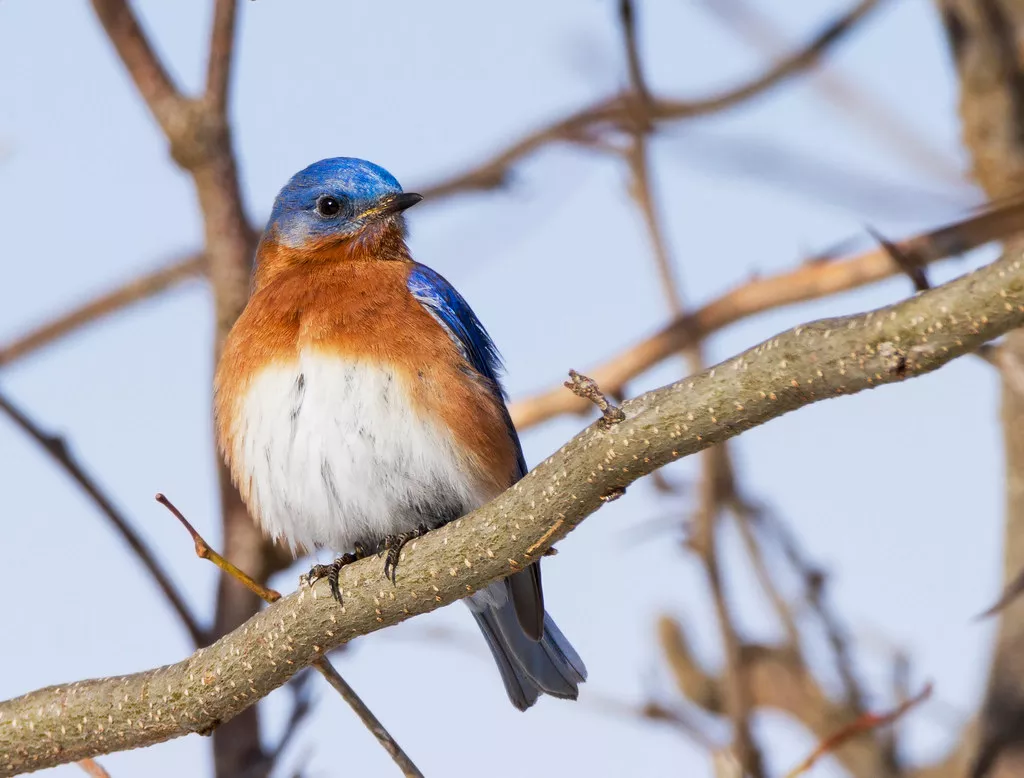
Image Source
- Scientific name: Sialia sialis
- Lifespan: 6 to 10 years
- Size: 6.3–8.3 in
- Native to: Eastern North America and south as far as Nicaragua
North and central Florida is home to the Eastern Bluebird
Adult males have a deep shade of admiral blue on their top portions. Their wings, tail, and backs of their heads are all colored in the same way.
Males seem to be wearing a hat because of their partially orange collars. Males have a conspicuous rufous orange chest.
Adult females have more grayish-brown coloring on their top portions. However, females also have a rufous-orange breast and flanks, a blue tail, and blue wing feathers.
Although it migrates in the northern half of its habitat, it is a year-round resident in Florida.
This bird builds its nests in holes and competes for nesting places with House Sparrows and European Starlings.
They travel in flocks during the autumn migration and like eating fruits and berries.
Due to a scarcity of nesting cavities and competition from European Starlings, the population of Eastern Bluebirds saw a sharp fall near the end of the 20th century.
But primarily because of the efforts of several Florida people supplying nest boxes for Eastern Bluebirds, these birds are a regular sight in Florida once again.
Although this type of bird prefers to nest in holes and used to raise its young in woodpecker nest cavities, it now accepts artificial nesting places with open arms.
By placing mealworms in your bird feeder, you may entice beautiful bluebirds to your garden in Florida.
4. Blue Jay
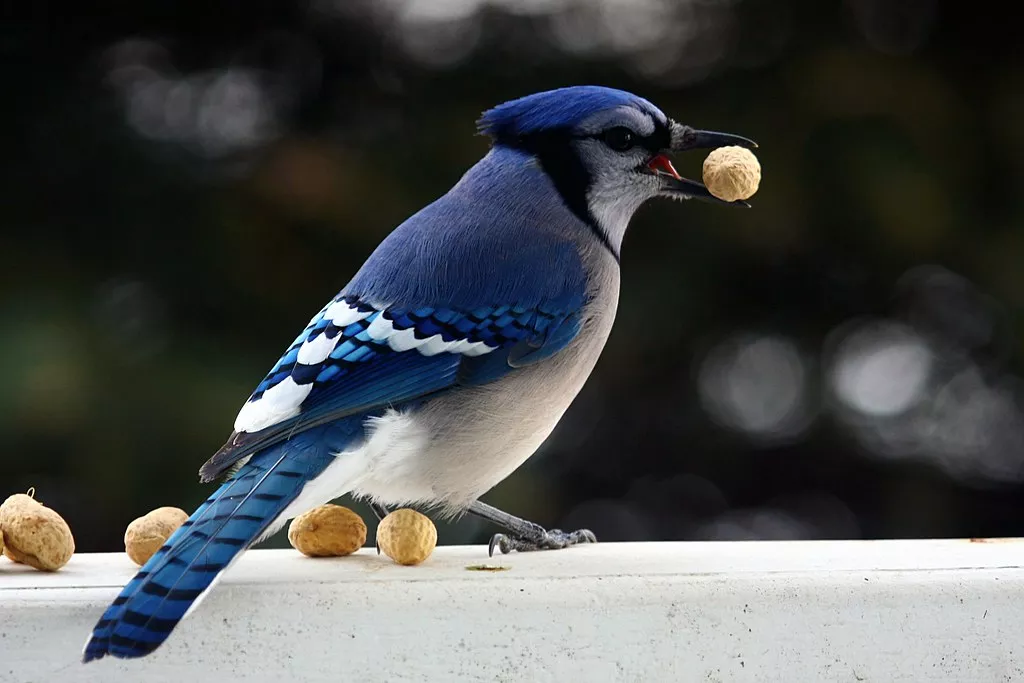
Image Source
- Scientific name: Cyanocitta cristata
- Lifespan: about 7 years
- Size: 9 and 12 inches
- Native to: North America
A widespread blue-colored bird of Florida, the Blue Jay enjoys open regions with scattered trees, bushes, and other plants with deep undergrowth.
These medium-sized blue birds have brilliant arctic blue wings and tail feathers and are greyish blue on top. They have light grey underparts.
They are sociable birds that live in tiny communities known as colonies, each of which has a dominant couple and a number of subordinates.
Male birds in positions of dominance aggressively drive away subordinates while defending their territory from invaders. Young birds and inferior females are tolerated but not safeguarded.
They are opportunistic feeders. In addition to eating carrion, fruit, insects, and small vertebrates, they often steal food from other animals.
Insects make up the majority of their food throughout the summer. Sometimes they capture insects in flight, while other times they use various methods to collect insects on the ground.
These Florida bluebirds often forage on man-made objects including buildings, bridges, and telephone poles.
Jays often race along trees or wires while on the prowl for food before swooping down to seize prey.
Despite being a largely migratory species, they spend the whole year in Florida. They may travel during the colder months to places where there is greater availability of food.
It is recommended to provide these birds with peanuts or sunflower seeds if you wish to attract them to your bird feeder.
5. Barn Swallow

Image Source
- Scientific name: Hirundo rustica
- Lifespan: 4 years
- Size: 5.5 and 7 inches
- Native to: Europe, Asia, Africa, and the Americas
Nearly all of North America south of the Arctic Circle is home to the barn swallow.
When exposed to sunlight, this bird’s iridescent upper parts glitter in a range of dark blue hues.
Its belly is light reddish-orange, with a chestnut orange forehead and neck and a reddish-orange underside.
Another excellent characteristic of the Barn Swallow that you may use to recognize this bird is its forked tail.
However, be aware that young barn swallows have duller plumage than adults and a shorter, less forked tail.
The Barn Swallow used to nest in hollow trees and caves but now prefers to do so within barns and under the overhangs of buildings and bridges.
In most locations, barn swallows are still a fairly frequent sight. However, Barn Swallow populations have generally been declining, particularly in the northern part of Florida.
This fall is probably brought on by the reduction in breeding and foraging locations.
The Barn Swallow is a kind of swallow that feeds on flying insects like mosquitoes and flies, catching them closer to the ground than other swallow species. This bird consumes termites while living in its winter habitat.
6. Black-throated Blue Warbler
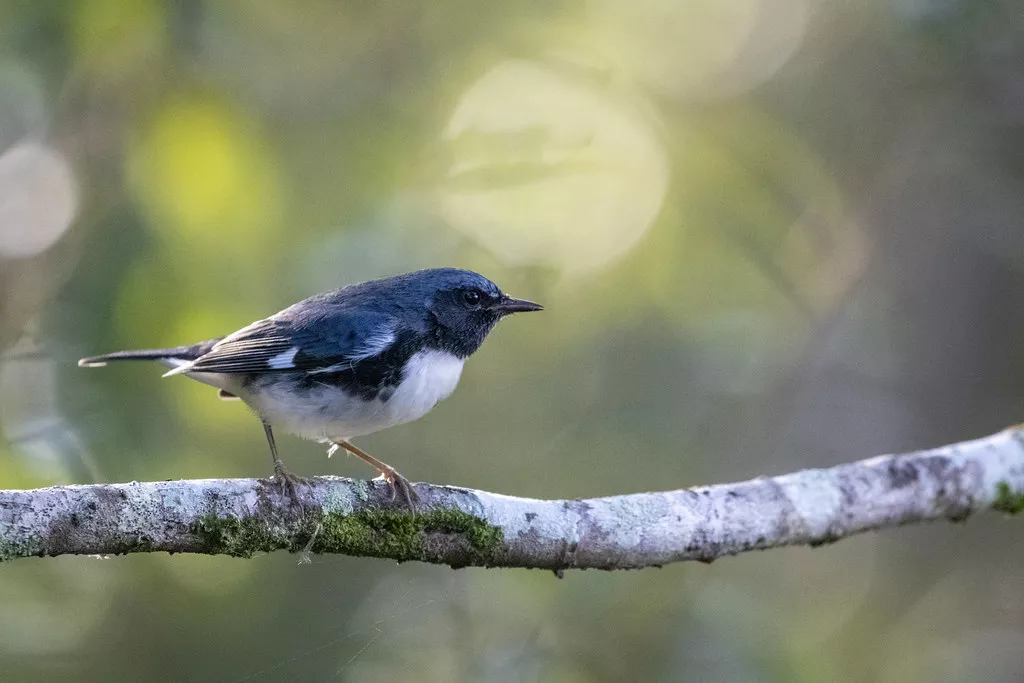
Image Source
- Scientific name: Setophaga caerulescens
- Lifespan: 10 years
- Size: 5.1 in
- Native to: North America
The Black-throated Blue Warbler’s male and female counterparts have strikingly different plumages.
Adult males have predominantly dark blue upperparts throughout the summer, black wings, and a white mark at the base of the primary feathers.
Due to a line of black feathers, there is a clear demarcation between the underparts and the upper parts.
Females and young birds, in contrast, have a greyish-green top and a light yellow bottom.
During the months of May through August, this bird may be encountered nesting in the northern and central regions of North America.
It is a strictly migratory bird that spends most of the year in the Caribbean and southern Florida. Most of the year, these warblers eat insects, but in the autumn, they also eat berries.
7. Northern Parula

Image Source
- Scientific name: Setophaga americana
- Lifespan: 7 year
- Size: 11.4 cm
- Native to: Florida north to the boreal forest of Canada, but skip parts of Iowa, Wisconsin, Michigan, and some states in the Northeast.
The Northern Parula is a vivid wood warbler with recognizable body patterns.
Adult males have predominantly blue upperparts, a yellowish-green patch on the back, two white wing bars, and blue underparts.
The throat is a vivid yellow color and has an orange breast band, which are two of its most recognizable characteristics.
The Northern Parula’s eye has a partially white eyering, which is a key characteristic for recognizing this little warbler.
This bird frequents Florida’s deciduous and mixed woodlands throughout the summer months. Additionally, despite being a migratory bird, certain specimens may be seen all year round in southern Florida.
8. Blue-gray Gnatcatcher (Small Bluebirds In Florida)
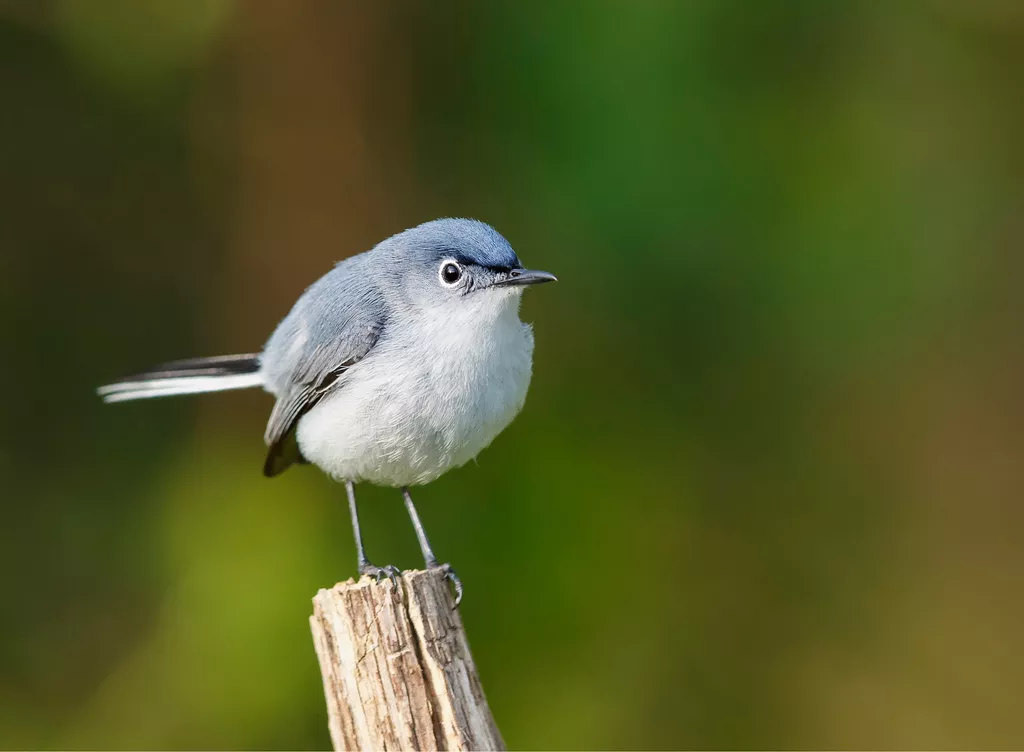
Image Source
- Scientific name: Polioptila caerulea
- Lifespan: 3-4 years
- Size: 3.9–5.1 in
- Native to: North America
With the exception of its long tail, the Blue-gray Gnatcatcher resembles a warbler quite a little.
Male mature birds have lighter grey underparts and blue-gray top parts. A white stripe may be seen at the edges of the black tail.
Female adult birds have ray-like upper parts and light grey underparts. Both sexes’ eyes have white eyering.
It may be encountered as a breeding bird in the temperate regions of North America, predominantly from early May through August.
It is a seasonal migrant, with year-round inhabitants in the southeastern populations. But many from the north spend the winter in the southern United States and Central America.
The long tail of this bird, which is often tilted upward, is an excellent way to recognize it.
9. Tree Swallow
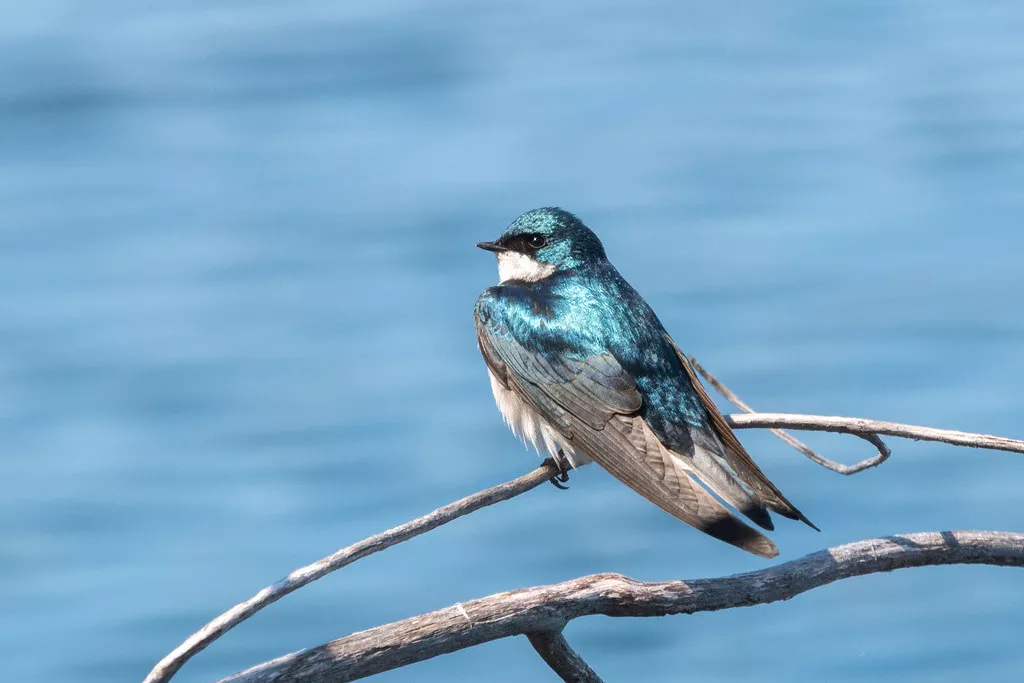
Image Source
- Scientific name: Tachycineta bicolor
- Lifespan: 5 years
- Size: 14 cm
- Native to: North America
It is a relatively common swallow in Florida and is most often found close to lakes, marshes, and ponds.
On top, adult Tree Swallows are greenish blue, while their underparts are buff white. They have iridescent feathers that change color when exposed to sunshine.
Young birds are more greyish brown with a white underbelly, whereas mature females and adult males resemble each other in appearance.
This swallow is receptive to appropriate nesting boxes, giving you the chance to attract this alluring blue-colored bird from Florida to your garden.
As a strict insectivore, this bluebird only consumes insects caught in the air, and as a long-distance migratory, it only spends the summer in Florida.
Tree swallows spend the winter in Central America and the region around the Gulf of Mexico.
10. Purple Martin
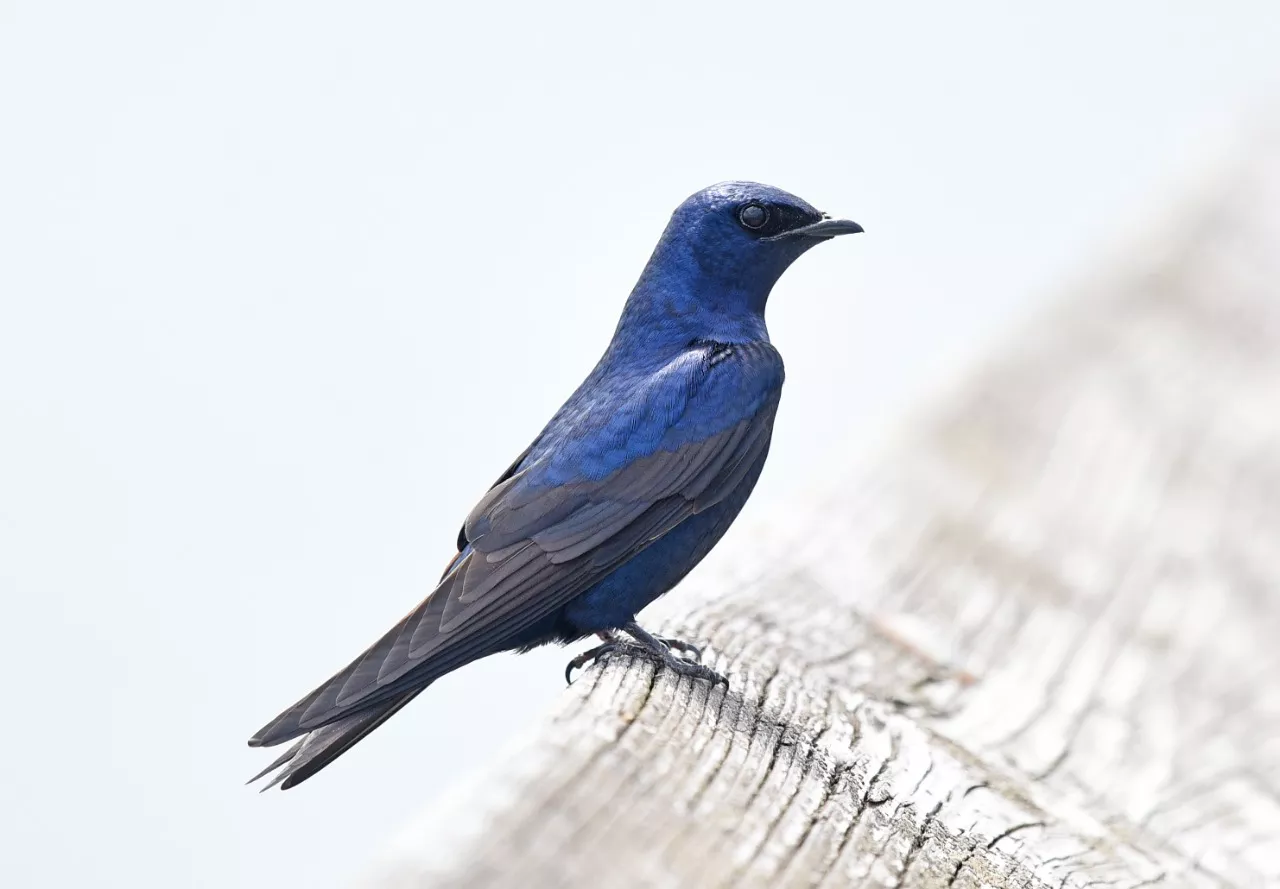
- Scientific name: Progne subis
- Lifespan: about 5 to 7 years
- Size: 7-inch
- Native to: North America
The biggest martin in North America is the purple martin. The male has an iridescent shine and is nearly totally a dark purple-blue color. Black makes up the tail and wings.
Females and young birds have beige-white underparts with light grey tops. Only the male Purple Martin of all the martin species lacks a belly that is bright in color.
These blue-colored birds have turned to adopt artificial nesting places after historically building their nests in tree holes.
The Purple Martin like to build colonies of hundreds of pairs of nesting birds for its homes. It mostly eats dragonflies and is a good airborne predator.
The Purple Martin sips while flying by skimming the surface of a body of water, much like other species of swallows.
This bird only winters in South America and is a completely migratory species. In the autumn, it gathers in large roosts that all fly south together.
Installing a Purple Martin home in your backyard is the ideal approach to attracting these beautiful bluebirds to your yard.
11. Belted Kingfisher (Crested Bluebirds In Florida)
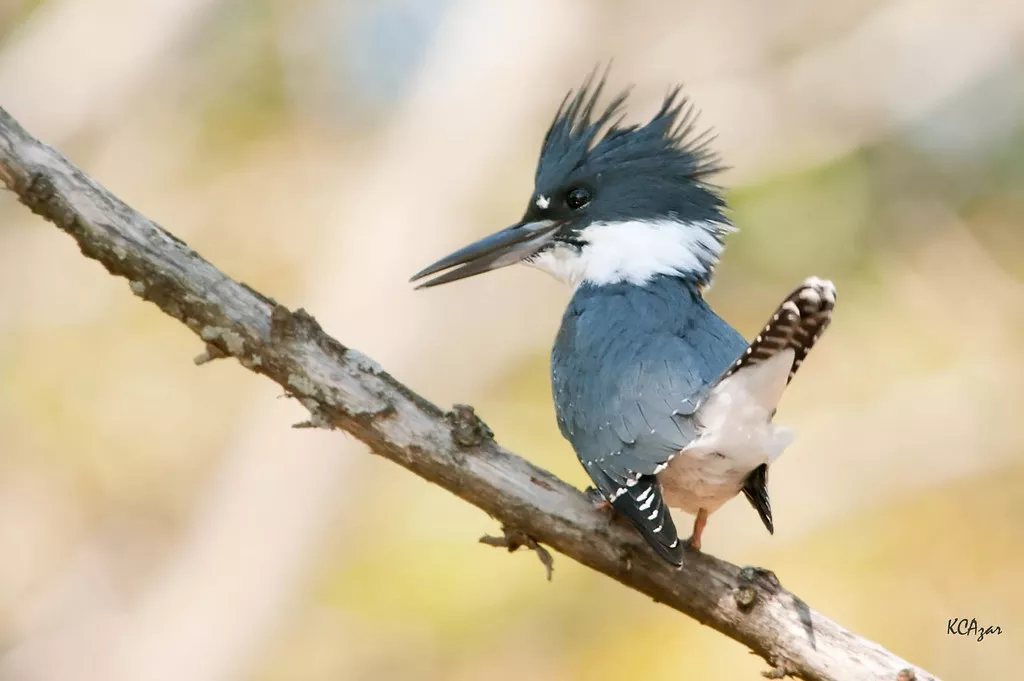
Image Source
- Scientific name: Ardea alba
- Lifespan: 15 years
- Size: 3 feet
- Native to: Asia, Africa, the Americas, and southern Europe
Due to its greyish blue upperside, the Belted Kingfisher superficially resembles a Blue Jay.
On the other hand, the Belted Kingfisher is darker than a Jay and is more often seen near bodies of water.
Almost the whole top of an adult male Belted Kingfisher is teal blue, with the exception of a white collar that divides the cap from the body.
They also have a white belly and a grayish-gray chest band. The rufous orange flanks set females apart from males.
The Belted Kingfisher loves areas that are close to lakes and rivers, where it fishes by plunging into the water headfirst.
Although this bluebird only partially migrates, it may be observed all year long in Florida and other southern regions of its habitat.
Belted Kingfishers from the north go to warmer regions of the country throughout the winter.
This Florida bird with a blue tint eats nearly solely little fish, therefore it is seldom seen far from water.
12. Great Blue Heron (Large Bluebirds In Florida)

Image Source
- Scientific name: Megaceryle alcyon
- Lifespan: Around 14 years
- Size: 11-14 inches
- Native to: North America
One of the most frequent herons in Florida, where it may be observed all year round, is the Great Blue Heron.
This bird enjoys wading in the shallows of lakes, marshes, and ponds in search of tiny fish.
With a wingspan of up to 6 feet, this heron may be huge and is found in Florida. With the exception of a white neck and eye stripe and dark grey wing feathers, it is nearly totally blue-grey.
This bird anxiously awaits a fish of a suitable size that will be within reach of its long, yellow beak.
This bluebird also forages in meadows, golf courses, and grassy places, where it pursues rodents. It is a resident bird that spends the whole year in Florida.
However, in order to catch fish, there must be open water, and if the winter is very harsh, northern birds will travel to southern states.
13. Little Blue Heron (Large Bluebirds In Florida)

- Scientific name: Ardea alba
- Lifespan: 15 years
- Size: 3 feet
- Native to: Asia, Africa, the Americas, and southern Europe
Little Blue Herons are slate blue in color as adults, but during their first year, young birds are totally white.
The brown beak and green legs of juvenile birds set them apart from other white herons.
These little herons are typical breeding birds seen all year round in Florida.
Due to an inflow of birds from farther north that spend the winter in Florida, their numbers increase throughout the winter.
These birds eat crayfish in great quantities along with tiny fish, mollusks, and crabs.
These birds love an aquatic environment and are seldom ever observed apart from water. They hunt in the shallows.
14. Blue Grosbeak

- Scientific name: Passerina caerulea
- Lifespan: 5 years
- Size: 5.5 to 7.5 in
- Native to: North American
The Blue Grosbeak is a stunning songbird with a big, conical-shaped beak.
With the exception of their black faces and two chestnut-brown wing bars, mature males are nearly totally dark blue in hue.
Contrarily, females are brownish-grey with light underparts. North Florida is a breeding location for this grosbeak, although it migrates to Central America for the winter.
This bird prefers grassland and shrubland that are dotted with thick shrubs.
15. Blue-winged Teal

- Scientific name: Anas discors
- Lifespan: up to 17 years
- Size: 14 to 15 inches
- Native to: Central America, the Caribbean, and South America south to Peru and northeastern Brazil
Although this bird is not totally blue, mature males have a powdered blue forewing and a dark green wing border. In flying, this coloring is most pronounced.
Outside of the mating season, these little ducks may be spotted in saline and brackish water settings but prefer marshes and ponds.
They often visit Florida during the winter, but during the summer they move to Canada and the northern United States.
16. Blue-headed Vireo

- Scientific name: Vireo solitarius
- Lifespan: 7 years
- Size: 5.0–5.8 in
- Native to: North and Central America
The Blue-headed Vireo is a little songbird, and both sexes resemble one another in terms of appearance.
Adult birds have an olive green back, a white neck, black wings, and a greyish blue hood. The large white eyering is an eye-catching feature.
This bird nests throughout the year in a variety of wooded settings in Florida.
There is an inflow of people from the north who spend the winter in Florida during the colder months.
What do the little bluebirds in Florida look like?
The Indigo Bunting is the only little bird in Florida that is totally blue. This bird is a kind of tiny finch that enjoys visiting seed-filled bird feeders in the spring.
Male Indigo Buntings may be heard singing loudly from trees throughout the summer.
The Eastern Bluebird, another little bird with a mostly blue coloration found in Florida, may be easily differentiated from the Indigo Bunting thanks to its rufous orange breast and belly.
Further Readings
- Types of Herons in Florida
- Types of Birds of Prey in Florida
- Types of Shore Birds in Florida
- Types of Swallows in Florida
- Birds that Chrip at Night in Florida
- Types of White Birds in Florida
- Types of Owls in Florida
- Types of Red Birds in Florida
- Types of Hummingbirds in Florida
- Types of Hawks in Florida
- Types of Pink Birds in Florida
- Types of Doves in Florida
- Types of Black Birds in Florida


![3 Types of Doves in Delaware [Images + IDs]](https://birdsology.com/wp-content/uploads/2023/09/51966837857_e62c6fbc37_b-600x400.jpg.webp)

![14 Beautiful Blue Birds in Mississippi [Images + IDs]](https://birdsology.com/wp-content/uploads/2023/09/52109509501_22164e9350_b-600x400.jpg.webp)
